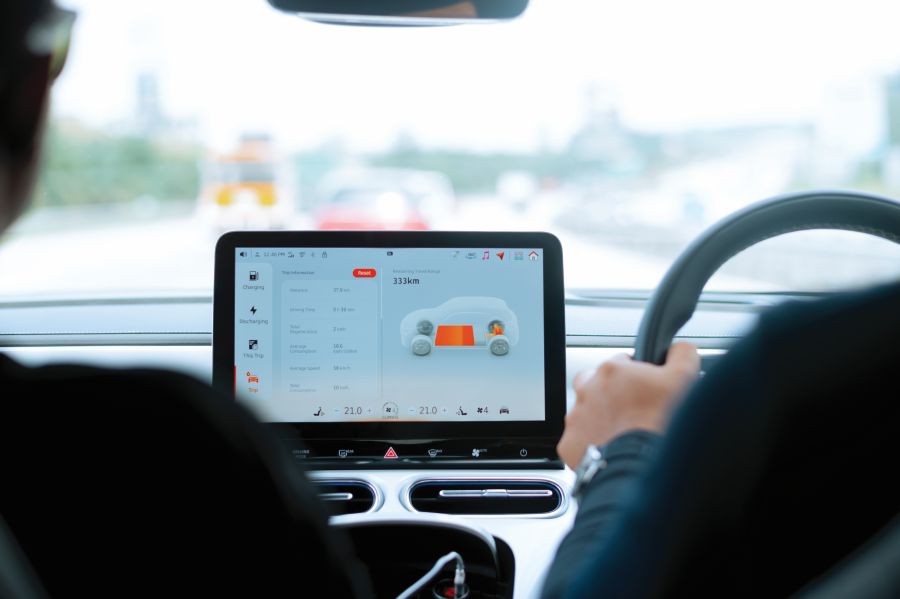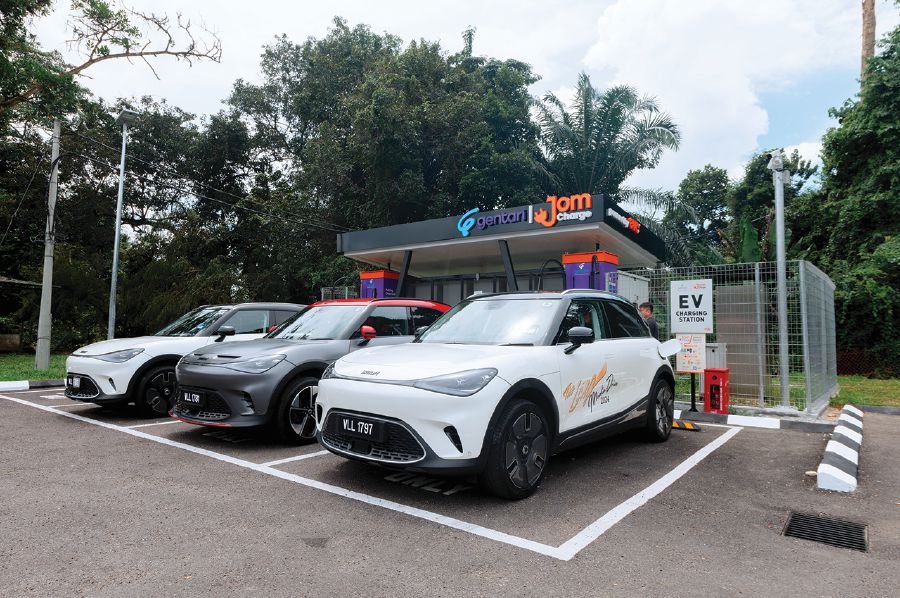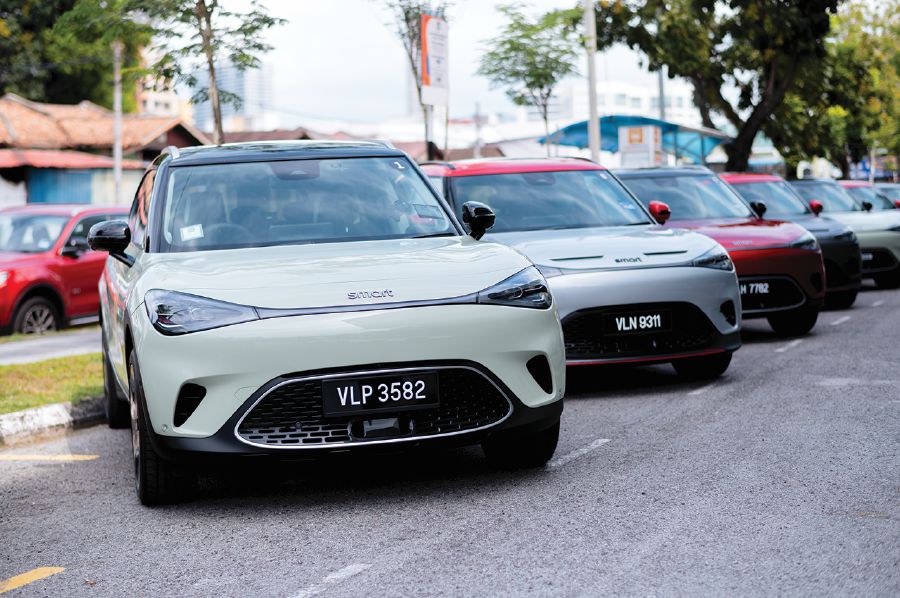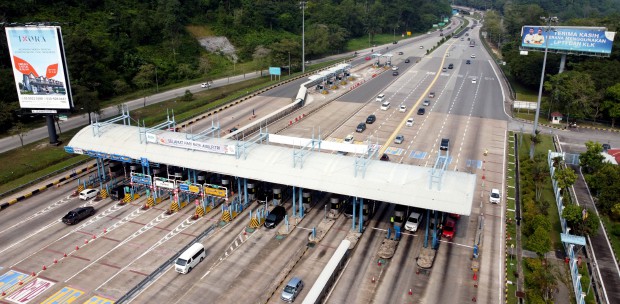THE festive seasons are here and you may be wondering if it's a good idea to make that trip back to your hometown with your newly bought electric vehicle (EV).
You're not alone in thought.
Range anxiety remains the top concern for most Malaysian EV owners and many are still wondering if the current charging infrastructure is sufficient.
The good news is that travelling on the North-South Expressway in an EV is entirely doable in 2024. Many have also successfully made their way to the East Coast on numerous occasions.
Early this year, smart Malaysia held a experiential drive using its new smart EVs, particularly the smart #1 Premium and Brabus variants.
The smart #1 Premium has a rear-wheel drive (RWD) drivetrain and a 66kWh NMC Battery. It is equipped with a single motor that delivers 200kW and 343Nm of torque.
It has a range of 440km (WLTP) and can sprint from zero to 100kph in 6.7 seconds.
The more powerful Brabus variant houses a dual-motor all-wheel-drive (AWD) powertrain that delivers an output of 315kW and 543Nm of maximum torque.
Its dual motors are powered by a 66kWh nickel manganese cobalt (NMC) battery that delivers a range of up to 400km (WLTP).
It has a century sprint time of 3.9 seconds and a top speed of 180kph.
The 22kW AC charging allows it to go from 10 per cent to 80 per cent charge in an estimated three hours. On the other hand, DC fast charging from 10 per cent to 80 per cent charge takes approximately 29 minutes.
Absent from the drive was the base Pro variant, which has a RWD setup and is powered by a 49kWh LFP Battery that provides a 315km range (WLTP).
The smart #1 Pro, Premium and Brabus are priced at RM189,000, RM219,000 and RM249,000, respectively.
Meanwhile, participants of the drive travelled from a location close to Proton Holdings Bhd's Centre of Excellence in Subang Jaya, Selangor to Batu Ferringhi in Penang and back.
It was an eye-opening and successful experience that would set the tone on what to expect from driving an EV over a long distance.
Managing your drive experience does require added attention.
Here are a few tips from the drive that we believe will help EV owners better prepare for a long drive.
KNOW YOUR EV
You may think it is only common sense that we can get the most out of our vehicles, regardless of powertrain, only when we have a better understanding of them.
However, this isn't exactly a one-for-one comparison and many overlook, if not underestimate, the process.
Before we begin our journey, we first need to understand the EV's performance. This is all the more crucial for EVs simply because of how they operate.
Range is a major factor for EVs and different models have different ranges. You have to take into consideration the voltage drain, which is depending on your drive pattern (the harder you are on the pedal the more power gets drained quicker, thus affecting the car's range as well), as well as the max charge voltage and charging compatibility.
Many would tell you that EVs also go through a regenerative process while braking or while going down a slope. This means EVs are a lot more energy efficient when you're stuck in traffic congestion, of which there will be hours during the Raya festive season.
However, it is important to remember you, too, are draining voltage the more time you spend in the car as you're also powering the air-conditioning, the infotainment system and any extra cabin features.
Unlike internal combustion engine (ICE) cars, EVs unfortunately do not have the luxury of instantly recharging themselves. And because of that, you will be spending extra time to make up for any detours on your trip.
For example, the Brabus can achieve 10 per cent to 80 per cent charged in 29 minutes via DC charging . However, 29 minutes is a long downtime, especially when you're not doing anything in particular other than waiting for the charge to complete.
It gets more complicated on the compatibility end (how much voltage your EV can take) and finding the proper charger (AC or DC charging) along the trip. That isn't taking into account the slot availability or if the station is online and working as intended.
Knowing these little details beforehand means less time spent working out these technicalities when you're already on the road.
APPS AND PLANNING
Depending on how old you are, you may remember the time when planning was a big deal when travelling interstate.
Packing road maps, having enough food and fuel, and planning rest and refuel stops are essential, especially when children and the elderly are involved.
But things are slightly different today if you're travelling in an internal combustion engine (ICE) car.
The advancement in technology and performance, smartphones, modern expressways and a vast network of rest and relax (R&R) stops mean your biggest concern is if you packed enough clothes for your extended stay.
And EVs come with a different set of rules to planning and two of the most important are planning your charging route and ensuring you have the digital application (app) on your smartphone.
Familiarising yourself with the relevant apps are essential as they help you locate and book a spot at charging stations. They're also the contact point for payment and hotline in the event of an emergency. Essentially, they are your lifeline when dealing with EVs.
As a rule, you're not encouraged to charge your EV to 100 per cent while on the road as the last 20 per cent will take a longer duration to complete.
Similarly, it is also recommended that you do not go below 10 to 20 per cent charged on your car battery so that your charge time is kept to a minimum.
Whenever possible, AC charge your car overnight whenever possible so that you'll have little to worry about in the morning.
TIME MANAGEMENT
Time management is important when it comes to EVs, more so than your standard ICE car, although your experience may be influenced by external factors as well.
This doesn't include accidents, weather, terrain or any fault of the vehicle itself. Instead, it is the infrastructure that largely governs how smooth everything works in your favour.
Traditionally, drivers are advised to get their vehicles checked and serviced before making the long festive journey.
EVs are mostly excluded from this practice as the nature of their design means there are fewer moving parts and, thus, less need for servicing.
The focus will be on the battery, which is generally well protected. So the only thing left to do is mostly to ensure there is sufficient battery range for the trip.
During the smart drive, participants faced numerous challenges, including finding a working charging station, booking errors via the apps, longish queues and payment issues.
These may not sound critical until you have experienced them first hand. Do remember that traffic during the festive season is usually at its peak.
Then, it's not advisable to speed up your drive too much for too long as that'll drain your battery quicker. Making up for lost time by speeding isn't always a straight line.
For context, participants took an average of two hours more to reach their destination compared to a standard ICE vehicle.
EV owners will most likely be spending a lot of time on the road but with good time management, they can instead focus on making a safe journey home this festive season.









